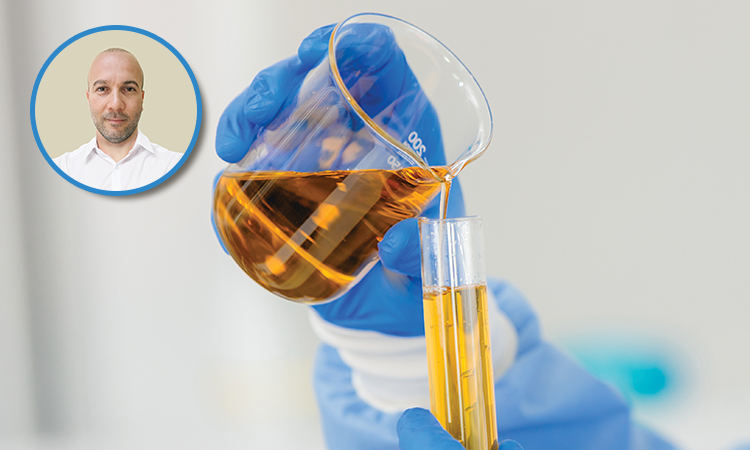Waste oil re-refineries are complex facilities where waste oils (halogen containing/non-halogen mineral based waste process oils, waste synthetic process oils, mineral chlorine containing/non-chlorine and synthetic waste hydraulic oils, waste synthetic insulation and heat transfer oils, etc.) collected from various locations and sources undergo various processes (such as water and light hydrocarbon removal, thin film evaporation, solvent extraction, hydrogenation) based on their properties.
The purpose of these facilities is to obtain marketable base oils (Group I and Group II) from waste oils. Waste oils as the primary raw material contain a wide range of fragmented hydrocarbons, heavy metals, and other organic pollutants (PCBs, PAHs, etc.) with various molecular weights and structures. Therefore, these refineries generate significant waste and wastewater depending on their capacity, waste oil composition, produced products and the complexity of the processes.
During the re-refining of waste oils, the generated waste and oily wastewaters are directly related to the process flow diagram, waste oil storage systems, the cleaning methods employed (dry or wet), and the properties of the waste oil. Generally, the generated waste can be classified into three categories as hazardous, non-hazardous and inert waste.
- 05 01 03*: Tank bottom sludges
- 08 03 17*: Printing toners containing hazardous substances
- 13 01 13*: Other hydraulic oils
- 15 01 01: Paper and cardboard packaging
- 15 01 02: Plastic packaging
- 15 01 10*: Contaminated packaging
- 15 02 02*: Absorbents, filter materials, cleaning cloths, protective clothing contaminated with hazardous substances
- 16 05 07*: Discarded inorganic chemicals containing or composed of hazardous substances
- 16 05 08*: Discarded organic chemicals containing or composed of hazardous substances
- 17 04 05: Iron and steel scrap
- 19 02 05*: Sludges containing hazardous substances from physical and chemical processes
- 19 02 08*: Flammable liquid waste containing hazardous substances
- 19 02 09*: Flammable solid waste containing hazardous substances
- 19 11 01*: Used filter clays
- 19 11 02*: Acid tars
- 19 11 05*: Sludges containing hazardous substances from on-site wastewater treatment

These wastes inherently contain varying concentrations of heavy metals (As, Cd, Cr, Pb), petroleum hydrocarbons and organic pollutants. Typical characteristics of the wastewater include high chemical oxygen demand (COD), grease, hydrocarbon and cyanide concentrations. As a result, if wastes and wastewater are disposed of or inadequately treated without control, serious environmental and human health problems can arise. Therefore, the proper management of waste and wastewater generated within the facility, in compliance with environmental regulations and relevant directives is of great importance. In this context, the legislation that should be considered first is;
- For wastes; Waste Management Regulation (R9, R12 and/or R13) and
- For wastewaters; Industrial Zones Implementation Regulation (OSBUY) and Water Pollution Control Regulation.













